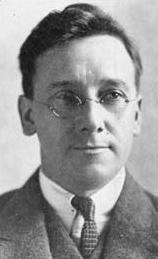1920 blind march
The march leaders met with prime minister David Lloyd George on 30 April, who made few promises apart from to pay for the marchers' rail tickets home.
A trade union and pressure group, the National League of the Blind (NLB), was founded in 1894 to campaign for the rights of visually impaired persons; a founder-member, Ben Purse, became its first general secretary in 1897.
[4] The NLB had little success in furthering the welfare of blind people in the years preceding the First World War, though it held its first strike in Bristol in 1912.
Later that year the house failed to pass a bill proposed by Labour member of parliament Ben Tillett, the third attempt to introduce legislation to improve the welfare of blind people.
[7] The march was led by Purse, David Lawley (the NLB North West organiser) and Patrick Neary (the Dublin branch secretary).
[3][6] The marchers carried banners reading "social justice not charity" and were accompanied by music played on drums, toy trumpets and mouth organs.
[3] The men found accommodation on the route, provided by trade unions and cooperative societies and in some instances, were allowed to sleep in police cells.
[4] In Trafalgar Square Labour Party politician Herbert Morrison and union leaders addressed the crowd whilst the marchers stood on the steps of the National Gallery.
[6][7] The prime minister claimed that his budget was limited, due to the costs of the war, and he could not meet their demands of better education, more work opportunities and a financial grant to all blind persons.
[3] Though similar legislation had been debated before the march; both the Royal National Institute of Blind People (RNIB) and historian Francis Salt writing in 2017 say the new act was a direct result of the 1920 NLB protest.
Though their plans were curtailed because of the COVID-19 pandemic the RNIB urged people to use their daily permitted exercise during the virus control lockdown to take steps significant to them and record it on social media.



